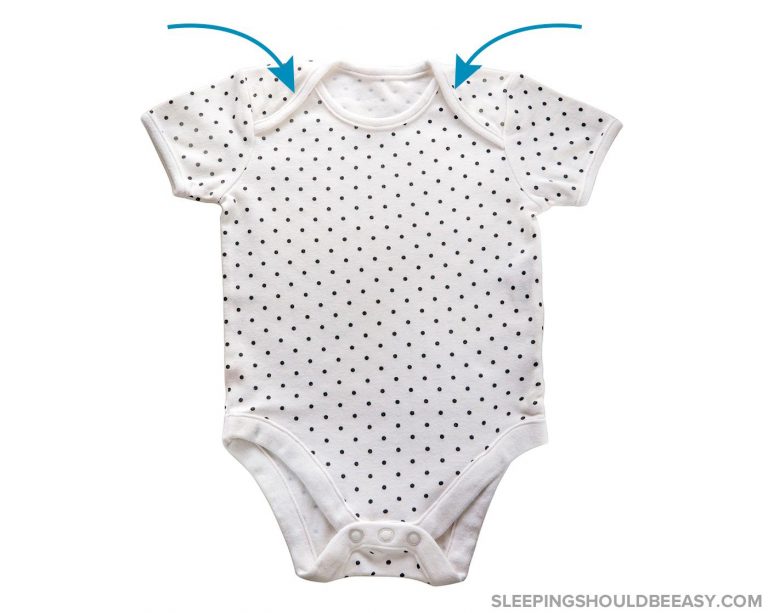Author and mother, Nina Garcia, shares her tips and tricks to help new parents with the challenge of the newborn stage.
Exhausted doesn’t even describe the newborn days. Waking up delirious from sleep deprivation multiple times a night. Struggling with the initial discomfort of breastfeeding, all while recovering from childbirth. Life with a newborn also made me doubt myself and question every decision I made. I wondered what in the world I got myself into as I wished for easier days (and reminisced about my old life). I wasn’t sure whether I was even fit to be a mom.
Newborn tips and tricks
But as with all things parenthood, I learned on the job. I discovered little hacks that made the days easier and more manageable. I researched newborn tips and tricks and grew more confident and better equipped to handle a new baby. And I reached out to fellow moms and discovered their secrets to surviving the newborn stage.
In short, these are the cool newborn tips and tricks I wish I knew from the start. They’re quick wins when we need them most—baby care tips for new moms to better manage.
Below are my best newborn tips and tricks I hope you find useful as well:
1. Onesies can also be pulled down during messy accidents
Nearly every onesie will come with those envelope flaps near the collar. At first I thought this was designed to accommodate different-sized heads and to make it more comfortable for baby to pull a shirt over his head.
Turns out, those envelope flaps are much more functional than fitting over a baby’s head. They allow you to pull the onesie down.
Normally, you’d undress the baby by lifting the onesie over the head. But at some point, you’ll likely face the dreaded poop explosion. One so full it spills out of the diaper and onto the onesie—not exactly something you’d want to pull over the baby’s head.
The envelope flaps allow you to then pull the onesie down over the baby’s shoulders, removing it without going near the baby’s head.

2. Eliminate gas with the elbow-to-knee trick
One of the biggest challenges with newborn baby care after birth is the baby’s gas and digestion.
My little guy had a serious case of gas, so much so that he was difficult to put to sleep. He’d fuss and cry, and I felt helpless with how to help him. I tried gas drops, which only seemed to help a little. I even tried different bottles, hoping that a new brand would ease his troubles.
Nothing seemed to work—that is, until I learned the elbow-to-knee trick.
Now, I had heard about doing bicycle kicks with a baby to expel gas. I tried this move, moving my baby’s knees closer to his chest, hoping he’d toot a little gas out of his tummy. It still didn’t work.
But then I tried the elbow-to-knee trick, which instantly removed my baby’s gas. Every time I’d touch his elbow to the knee, he’d give a little fart, then another when I repeated with the opposite limbs. It seemed like a miracle!
So, here’s how you do it:
- Lie your baby down on his back.
- Move his right elbow and left knee towards each other as if they were going to touch.
- Do the same with the opposite elbow and knee: Move his left elbow and right knee towards each other.
- Alternate a few times until your baby stops farting.
Hopefully, each time you connect one elbow to the opposite knee, your baby will fart and expel some gas. This will keep him be more comfortable and better able to sleep.
3. Keep your baby awake no longer than an hour and a half to avoid over-stimulation
Before I had kids, I figured babies sleep anywhere. After all, at family parties, we’d pass babies from person to person, and I never considered whether they were asleep or not.
When I had my first, I did the same. I didn’t follow any type of routine, much less look at the clock to see how long he’s been awake.
The result? He felt cranky and overtired, which made it harder to put him to sleep. I couldn’t lay him down drowsy and awake—instead, I had to hold him in my arms, rock or feed him to sleep.
Turns out, babies can only stay awake for so long. And more importantly, they don’t “just fall asleep” when they feel tired. If they’re overstimulated, hungry, uncomfortable or tired, they have a hard time falling asleep.
I then began to be more conscious of how long my baby was awake. I learned that an hour and a half is about the most a newborn can stay awake. And I looked for sleep cues and didn’t hesitate to put my baby down for a nap, even he’d only been awake for 45 minutes or an hour.
And guess what—he began to sleep better. He was less cranky and overtired and instead seemed to welcome his next nap. When I had twins a few years later, I remembered this handy trick and avoided keeping them awake too long, making them easy sleepers from day one.
Sure, this isn’t always convenient, especially if you feel stuck at home, but it can make a huge difference with how easy it is to put your baby to sleep.
4. Track your baby’s feedings and diapers
Your doctor will likely ask a few questions about your baby’s progress:
- what types of bowel movements he’s had
- how often he pees
- how many ounces of milk or minutes he nurses
And if you breastfeed, you’ll want to track how many minutes he nurses and on which breast. If he’s bottle-fed, track how many ounces he drinks.
For accurate answers, record your baby’s feedings so you don’t have to pull the information from memory.
Track your baby’s diapers as well, including, the kind of poop he had, such as color, texture, and how often he peed or pooped. Not exactly enticing, but necessary.
5. Feed your baby after he wakes up
It didn’t take long for me to see that my baby would fall asleep with nursing. I even prided myself for being the only who could put him to sleep—I had “mama’s touch,” I assumed.
Trouble is, he’d only fall asleep through nursing (or rocking). Nap times became horrendous—I’d spend several minutes rocking him to sleep only for him to wake up the minute I laid him down.
This also made nap times short. Forget about two-hour naps—each time he stirred, he wouldn’t know how to put himself back to sleep. I’d either resort to rocking or nursing him all over again, making both of us miserable and sleep deprived.
Then I read Tracy Hogg’s E-A-S-Y technique (eat/awake/sleep/you). Rather than feeding your baby to sleep, you’d feed him after he woke up. At first, I was doubtful. This was, after all, one of the ways I could put him to sleep. But when I saw how much he relied on external sleep aids to fall asleep, I knew I had to try a different way.
I then changed my routine. Rather than feeding my baby to sleep, I fed him after he woke up, which allowed him to try to fall asleep on his own. He stopped tying nursing with sleeping and instead expected to eat when he woke up.
Here’s how it works:
- Feed your baby (eat) after he wakes up (awake) so he’ll have energy for her awake time.
- After your baby has been awake a while, put him to sleep drowsy but awake (sleep). He can explore different ways to put himself to sleep, such as sucking on his thumb or rocking his head side to side.
- Once he’s asleep, you can tend to yourself (you) and repeat the cycle.
6. Find alternative ways to hold your baby
The first day I was home alone with my twins felt like a juggling act. With two babies to care for and only one set of arms, I needed to bounce between one baby to another to get them to sleep.
Because a baby’s preferred position? In your arms. The snuggling feels good, but isn’t sustainable. After all, you need your arms to get things done, from using the restroom to preparing food. And it’s not always safe to fall asleep with the baby in your arms.
Instead, use other techniques to hold the baby. I relied so much on baby gear to hold my babies, giving me time to tend to the other twin or catch a break.
These are the items I recommend the most:
- Swing: The swing was perfect for lulling my babies to sleep, where they often fell asleep for a nap. The motion soothed them when nothing else seemed to work, or at least kept them entertained during awake time.
- Baby wrap: A baby wrap allows you to keep the baby close while freeing your arms to do other tasks.
- Stroller: Many babies will fall asleep in a stroller, making for convenient errands or a walk around the block. A stroller is also helpful for quick shopping trips, placing the baby in the stroller while you put items inside.
- Infant cushion: The infant cushion below uses the baby’s weight to give the feeling of being held.
Using several baby items to hold your baby is also convenient so that, should he fuss with one, you have other options handy.
7. Swaddle your baby for better sleep
For months, your baby grew accustomed to the tight spaces of your womb. To go from the fetal position to lying flat on his back isn’t the easiest transition. He also has the Moro reflex, which explains the sudden flailing of the arms that can startle him awake or even hit him on the face.
Enter the swaddle. By wrapping your baby systematically in a blanket, you’ll prevent his arms from flailing and waking him up. And by recreating the snugness of the womb, you’re more likely to help your baby sleep longer stretches.
Here’s how to swaddle your baby:
- Place a square swaddle blanket flat on a surface like a diamond.
- Fold the top corner down 5-10 inches towards the middle so that the diamond now looks like the top part got cut off.
- Place your baby on top of the swaddle with her neck aligned with the straight line you folded.
- Keep your baby’s arms straight next to her body. Then fold the left corner of the swaddle over her body and tuck it under her back. Her left arm should still be free.
- Fold the bottom corner up and over her left shoulder, tucking it inside the swaddle.
- Holding her left arm down, fold the right corner over her arm and entire body, tucking the flap into the swaddle.
Follow this step-by-step illustration of how to swaddle a baby.
For a more convenient option, use a Velcro swaddle blanket or the Baby Merlin Magic Sleepsuit. Both keep your baby snug, are less likely to come undone and take less steps—especially useful in the middle of the night.
8. Use white noise so your baby doesn’t startle
In the womb, your baby heard a constant white noise, from the beating of your heart to the muffles of the outside world. But now, he wakes up over the slightest sound.
I learned the magic of white noise early on, when the constant hum of a fan would help my baby sleep much longer than when I didn’t have it running. I was better able to shuffle around the house without tiptoeing, and I didn’t have to worry about noises from the neighbors.
Place a fan or heater in the room your baby is sleeping in to help him fall and stay asleep. Not only is the white noise comforting, it also muffles sounds from elsewhere. If you’d rather get a white noise machine so you don’t affect the room’s temperature, check out these highly-rated options:
9. Hang darkening curtains to extend baby’s naps
You may have heard that you should have your baby nap in a bright room during the day to help him learn day from night. You’re avoiding long naps in the day that he should reserve for nights.
I disagree.
Yes, we want our babies to sleep longer at nights, but we want them to take long naps, too. Hang darkening curtains in your baby’s room—even during the day—so he can sleep longer stretches. As anyone with a baby who only naps in 30-45 minute chunks, a dark room can make a huge difference.
Another benefit of a dark room? Drawing the curtains helps signal that it’s nap or bedtime. These routines let your baby know that he should be sleeping rather than playing.
Rarely does a baby nap for five or more hours during the day (I can count twice for mine). And should you want to avoid those long naps, then wake the baby up. Otherwise, dark curtains help your baby stretch shorter naps to longer ones.
And even with darkening curtains during the day, your room won’t get pitch black the way it does at night. So even then, your baby will still learn that darkness means long stretches of sleep at night.
We couldn’t have said it better, that is why this is a direct repost from Sleeping Should Be Easy





